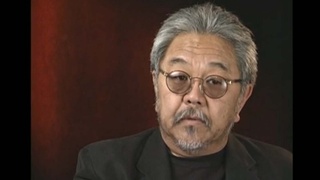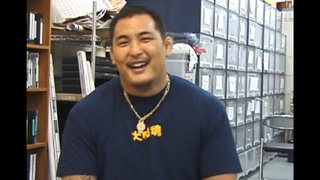Interviews
A lucky man (Spanish)
(Spanish) When we were students in high school we went to Aichi Ken (prefecture), in the Nagoya province. From Nagoya some sixty kilometers away, before there was a marsh where you couldn’t do anything, there was a plane factory. We were working there, but the soil was very loose, and at the time there was an earthquake and only four of my classmates survived; the rest died. For that reason I was as sad as I was lucky. Afterwards, [I was] a survivor in many ways, I believe that I am very lucky, because they told me, “you have to go to Argentina.” It was in 1948, you know, that in Japan, I left from Yokohama and the following week I arrived in San Francisco, and there was an earthquake [in Japan] and many perished, including many relatives. The earthquake was centered in the Fukui province where I was; thus, I truly saved myself. I always think: I become nervous and many times I don’t say to anybody, but I analyze [my past experiences] and I say to myself: “shut up if you are a dead man, [but] you are still alive.” And many times I am relieved by [that thought].
Date: September 18, 2006
Location: Buenos Aires, Argentina
Interviewer: Takeshi Nishimura, Ricardo Hokama
Contributed by: Centro Nikkei Argentino
Explore More Videos


Going back to Hawaii
An expert researcher and scholar on Japanese immigrant clothing.

Picture brides and karifufu
An expert researcher and scholar on Japanese immigrant clothing.

Working at the magazine
(b.1948) Nikkei from Southern California living in Japan.

Kibei schoolchildren in Hiroshima, Japan
(b.1913) Kibei from California who served in the MIS with Merrill’s Marauders during WWII.

The reason he came to the United States (Japanese)
(1949 - 2019) Taiko player. Founded five taiko groups in Southern California

Grandfather's arrival in the U.S., experiencing discrimination
(b. 1939) Japanese American painter, printmaker & professor

Mother's immigration to U.S. as a treaty merchant
(b. 1927) Japanese American Nisei. Family voluntarily returned to Japan during WWII.

Why her parents came to Canada
(1918-2004) Interned in Slocan during World War II. Active member of the Japanese Canadian community.

Family background of Fredrick Yoshihide Sasaki
(b. 1918) Issei businessman in Canada

Arranged marriage
(b.1912) Japanese Canadian Issei. Immigrated with husband to Canada in 1931

Her early life in Canada
(b.1912) Japanese Canadian Issei. Immigrated with husband to Canada in 1931

Coming to America
(b.1943) Shin-issei grand master of taiko; founded San Francisco Taiko Dojo in 1968.

The reason for coming to Japan
(b. 1967) Hawai`i-born professional fighter in Japan

Yobiyose system in Canada
(b. 1922) Canadian Nisei who was unable to return to Canada from Japan until 1952
